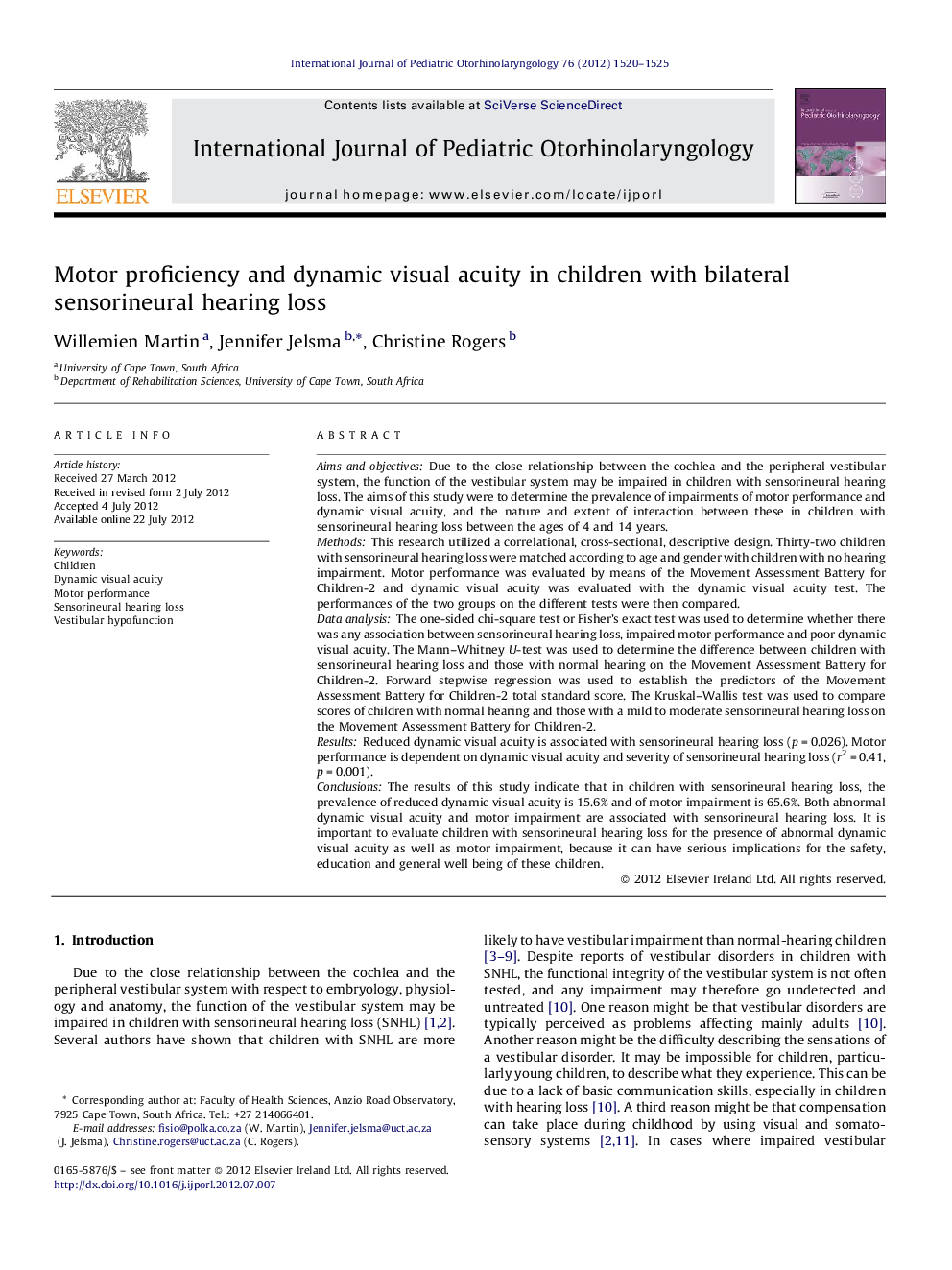| Article ID | Journal | Published Year | Pages | File Type |
|---|---|---|---|---|
| 6214126 | International Journal of Pediatric Otorhinolaryngology | 2012 | 6 Pages |
Aims and objectivesDue to the close relationship between the cochlea and the peripheral vestibular system, the function of the vestibular system may be impaired in children with sensorineural hearing loss. The aims of this study were to determine the prevalence of impairments of motor performance and dynamic visual acuity, and the nature and extent of interaction between these in children with sensorineural hearing loss between the ages of 4 and 14 years.MethodsThis research utilized a correlational, cross-sectional, descriptive design. Thirty-two children with sensorineural hearing loss were matched according to age and gender with children with no hearing impairment. Motor performance was evaluated by means of the Movement Assessment Battery for Children-2 and dynamic visual acuity was evaluated with the dynamic visual acuity test. The performances of the two groups on the different tests were then compared.Data analysisThe one-sided chi-square test or Fisher's exact test was used to determine whether there was any association between sensorineural hearing loss, impaired motor performance and poor dynamic visual acuity. The Mann-Whitney U-test was used to determine the difference between children with sensorineural hearing loss and those with normal hearing on the Movement Assessment Battery for Children-2. Forward stepwise regression was used to establish the predictors of the Movement Assessment Battery for Children-2 total standard score. The Kruskal-Wallis test was used to compare scores of children with normal hearing and those with a mild to moderate sensorineural hearing loss on the Movement Assessment Battery for Children-2.ResultsReduced dynamic visual acuity is associated with sensorineural hearing loss (p = 0.026). Motor performance is dependent on dynamic visual acuity and severity of sensorineural hearing loss (r2 = 0.41, p = 0.001).ConclusionsThe results of this study indicate that in children with sensorineural hearing loss, the prevalence of reduced dynamic visual acuity is 15.6% and of motor impairment is 65.6%. Both abnormal dynamic visual acuity and motor impairment are associated with sensorineural hearing loss. It is important to evaluate children with sensorineural hearing loss for the presence of abnormal dynamic visual acuity as well as motor impairment, because it can have serious implications for the safety, education and general well being of these children.
